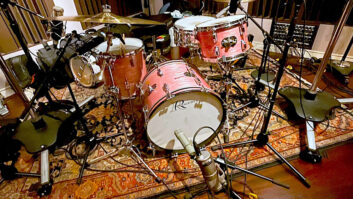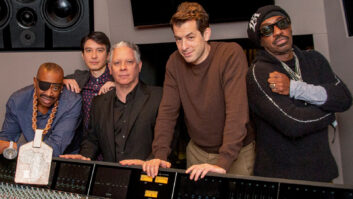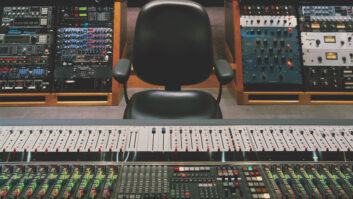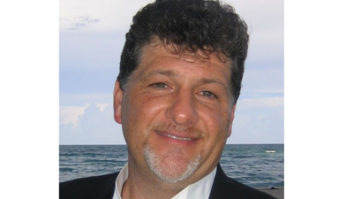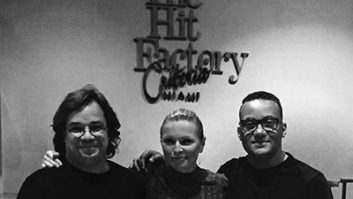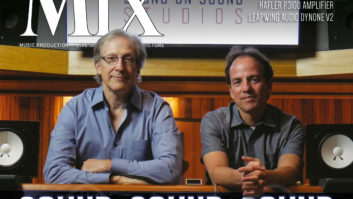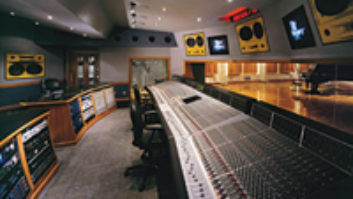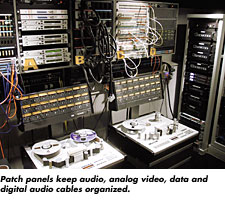
Last winter, I had a speaking engagement that gave me theopportunity to visit my old stomping grounds in Miami. Back in theearly ’80s, Criteria Recording Studios was my home away from home.Actually, it was a madhouse, but a fun madhouse. Nowadays, it’s HitFactory/Criteria Recording. I thought I’d drop by to check out thecurrent state of tech at the shiny new facility and fill you in on atop-notch install.
I wanted to see what a well-funded, state-of-the-art install lookslike and hopefully discover some ideas for future purchases andupgrades. My HFC tour guide was Simon Soong, whose journey into audiomadness began with an undergraduate stint at the University of Miami’sMusic Engineering program, where an undergraduate EE degree also earnsa BFA in Music. He had heard about an opening at Criteria and waseventually hired, joining a team of two other techs; for the past 18months, he’s been chief engineer, supervising a staff of three.
My tour started with infrastructure, specifically the wiring: Allharnesses were preassembled in the UK by White Mark and installedon-site. Mogami-to-Elco connectors were specified for analog carriage,with Category 5E from Belden for data connectivity. All rooms, saveone, have floor troughs, but each machine room has wire trays comingin. All cable types — analog audio, analog video, data anddigital audio — are in individual bundles but share the sameraceway. Initially, one room had a digital desk that didn’t require atrough, but it was yanked. The replacement, an SSL 9000, requiredtrough wiring and so one had to be cut into the slab. Simon decided togo deep, cutting a 3-foot trough so that he’d never have to worry aboutcarrying capacity.
PATCH PANELS
The photo above shows an example of patch panels in each machineroom. The rackspaces shown are:
A) Motionworker (firmware Version 5.0), Audio Kinetic SynchronizerES1.11 and ES 1.12;
B) EDAC/Elco patchfield for analog audio;
C) BNC patchfield for analog video, video house sync, AES/EBUworkclock and MADI;
D) Sigma SS2100 audio distribution amp and video-sync distributionamp, NVision NV5500 sync generator, NVision NV1000 wordclockdistribution amp and TT patch for AES/EBU.
In addition to the pipes above, there are two remotely patchablevideo feeds into each control room, along with ISDN access in eachmachine room.
Performing the master clock duties is an NVision 5500, whichgenerates both video house sync and wordclock. When a session needs acombo analog/ digital mix, house sync feeds an Audio Kinetics ES-Locksynchronizer in conjunction with a Motionworker machine-controlinterface, which then feeds analog slaves. Of course, that same housesync feeds a Pro Tools USD (Universal Slave Driver), keeping everyoneon the same page.
Hit Factory/Criteria has the luxury of keeping many Digi drivesonline, so Simon sticks with FWB’s Hard Disk Toolkit when tweezing thebeasts, even though the SCSI HBAs are from Atto. His team performsdrive maintenance once a month, a high-level format before it’s rotatedback into service. If the drive’s been “naughty,” then thedrive gets a low-level format instead. Though FireWire drives usuallyship with installable OS 9 system extensions, these are always disabledprior to joining the in-service pool. Simon still finds that thecurrent implementation of drives, bridges and drivers yields a maximumof 48 channels on FireWire, whereas a modern SCSI drive will reliablyyield a satisfying 64 channels.
All rooms have Ethernet on the same phone-line-combo wall plate thatis fed from a Cayman Systems DSL router/Firewall, which provides DHCPservices for the 100BaseT network. That, in turn, is fed from an ADSLbridge with services provided by the local ILEC, Bellsouth. Futureplans call for an upgrade to SDSL (symmetrical DSL), as well as anin-house OS 10 server because, as Soong says, “out of the box, itcomes with everything!” Simon also adds, “The license costsare very reasonable.” They use Xdrive Technologies for now tomove MP3 or .WAV files but not to move session files. “We haven’thad much call for that [shipping whole sessions over public networks],so it suffices.”
When Simon first started out as a tech, the gear was fixable butremarked that, “you can’t troubleshoot anymore. The circuitry isall surface-mount so repairs become very difficult.” Uponreflection, he laments that, “it’s very hard to find a goodmaintenance person.” After racking up huge college debts,“You don’t want to start as an intern! A great thing about theHit Factory family is we take maintenance and the technical aspects ofthe business very seriously.”
On the subject of classic analog gear, he continues, “We havefour EMT 140 plates, all with Martech [retrofit] electronics, but veryfew clients request them. Despite their sound, engineers increasinglyrely on emulation rather than the real thing.” Weird shit, sez I.They still have my fave old-school vocal processor, a Cooper Time Cube,though it lives in storage. Speaking of old school, analog decksconsist of straight-up Studer A827 multitracks, a few are Gold Edition,along with stock Ampex ATR-102s and Studer A820 two tracks with a fullrange of head stacks for all.
Because Miami is a wee bit south of Duluth, HVAC is a serious issueabout 10 months out of the year. Air handlers are a mix of Rheem andCarrier. The 30 existing roof-mounted air handlers were eitherremounted or put on slabs for proper mechanical isolation, so now theunits don’t contribute to structurally borne noise.
Speaking of noise criteria, general manager Trevor Fletcher relateda great story about Studio C during its construction phase. He hadbooked in a string date as the very first session in the new room, andit turned out that parking lot renovations right outside coincided withthe same time slot as the recording. He sat by his phone, dreading tomake the call to hold up excavation of the coral bedrock that underliesall of southern Florida, but the call never happened. The room was deadquiet, the date went off without a hitch, and nobody was the wiser.
Studio F, a small and really comfy tracking and mixing room, has aunique “tram” feature for near-field monitors. The wickedcool, custom-aluminum track system devised by White Mark allows optimalplacement regardless of operator position. Small but sturdy speakerplatforms ride on rails that wrap around the room so that mini-monitorscan be placed anywhere in the horizontal plane; amplification for minisis by Bryston. Crown M5000s are used for the mains and BGWs for thesubwoofers in all rooms save Studio C, which is space-constrained. Agaggle of Haflers are used for foldback, which are fed by 16-channelIntelix Psychologist mixers.
That’s all I have for you this month. I hope this deviation from mystandard techie fare was appetizing. Let me know if you’d like moreback room tours or specific topics. Write me at [email protected]. Till next month, keep on tweaking!
OMas was an iterant tweaker as a youth, particularly after hediscovered Nikola Tesla and the joys of high-voltage electricity. Thiscolumn was created while under the influence of Trevor’s mojitos,ObliqSound Remixes and the satisfying acoustic pop of TheVessels.
